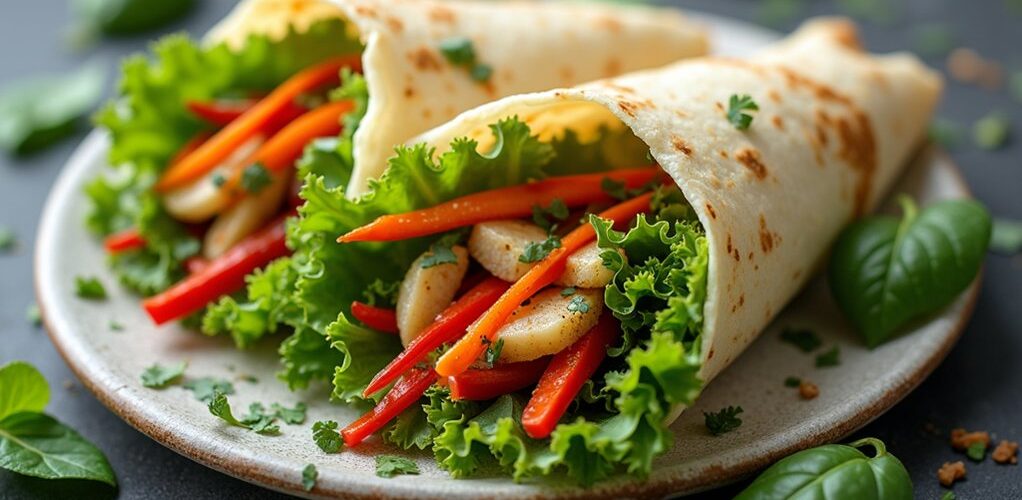
Rice paper is not considered low-carb, containing approximately 8.4 grams of carbohydrates per sheet, with traditional spring rolls reaching up to 37 grams when including common fillings. However, several alternatives exist for carb-conscious individuals, including lettuce wraps, cabbage leaves, and specialized low-carb rice paper options averaging 4.2 grams per serving. Careful selection of fillings, such as proteins and low-carb vegetables, combined with sugar-free dipping sauces, can create satisfying spring rolls while maintaining dietary goals. The key to creating delicious low-carb spring rolls lies in understanding ingredient substitutions and proper preparation techniques.
Key Takeaways
- Traditional rice paper is not low-carb, containing approximately 8.4 grams of carbohydrates per sheet with minimal fiber content.
- Low-carb alternatives include lettuce wraps, cabbage leaves, and specialized keto wraps that contain only 2.4 grams of carbs.
- Traditional spring rolls can reach 37 grams of carbs when including rice noodles and sauces, making them unsuitable for low-carb diets.
- Choose zero-carb proteins and low-carb vegetables like shrimp, chicken, bok choy, and bell peppers for filling options.
- Use low-carb sauces like coconut aminos or sugar-free peanut sauce to maintain flavor while reducing overall carbohydrate content.
Understanding Rice Paper's Carbohydrate Content
While rice paper is a popular ingredient in Asian cuisine, particularly for making spring rolls, it contains a notable amount of carbohydrates that may not align with low-carb dietary goals.
Each rice paper sheet contains approximately 8.4 grams of carbohydrates, with a net carb count of 8.3 grams due to minimal fiber content. When combined with traditional ingredients like rice noodles and sauces, a single spring roll can reach nearly 37 grams of carbohydrates.
For those following a low-carb diet, understanding the carb content of rice paper is essential for making informed dietary choices.
Fortunately, alternatives to rice paper exist for creating low-carb spring rolls, such as using lettuce or cabbage leaves as wraps, which can considerably reduce the overall carbohydrate intake.
Traditional Spring Roll Nutritional Breakdown
Traditional spring rolls, with their rice paper wraps containing 8.4 grams of carbohydrates per serving, present a significant consideration for those monitoring their carb intake.
When combined with common fillings like rice noodles and peanut sauce, a single spring roll can reach approximately 36.9 grams of total carbohydrates, making it a potentially challenging option for low-carb diets.
Understanding these nutritional values becomes vital when comparing different types of rice paper and seeking alternatives that better align with specific dietary requirements.
Carb Content Per Roll
Understanding the carbohydrate content in spring rolls requires a closer look at their individual components. A single sheet of traditional rice paper contains approximately 8.4 grams of carbs, with negligible fiber content resulting in 8.3 grams of net carbs.
When assembled into a complete spring roll recipe with vegetables, the carb count typically reaches around 10 grams per roll.
For those following a low carb keto lifestyle, it's important to note that spring rolls can become substantially higher in carbohydrates when additional ingredients are incorporated. With rice noodles and peanut sauce, the total carb content can climb to nearly 37 grams per roll.
To maintain lower carb counts, consider substituting traditional rice paper with low-carb alternatives and being mindful of high-carb fillings and sauces.
Comparing Rice Paper Types
Different varieties of rice paper present distinct nutritional profiles that greatly impact the overall carbohydrate content of spring rolls. Traditional rice paper contains approximately 8.4 grams of carbs per serving, while some brands can reach up to 16.4 grams, making label reading essential for carb-conscious consumers. For those seeking lower-carb alternatives, keto wraps offer a significant reduction in carb count, averaging just 2.4 grams per serving.
| Wrap Type | Carbs Per Serving | Total Roll Carbs |
|---|---|---|
| Traditional Rice Paper | 8.4g | 36.9g |
| High-Carb Rice Paper | 16.4g | 44.9g |
| Egg Roll Wrapper | 15.0g | 43.5g |
| Keto Wraps | 2.4g | 30.9g |
| Low-Carb Rice Paper | 4.2g | 32.7g |
Keto-Friendly Alternatives to Rice Paper
Several delicious alternatives to rice paper exist for those following a ketogenic lifestyle. For individuals seeking to maintain their low-carb diet while enjoying spring rolls, collard greens present an excellent option, containing just 0.5 grams of net carbs per leaf compared to rice paper's 8.4 grams. Blanched cabbage leaves serve as another keto-friendly wrapper, offering similar flexibility and durability with minimal carbohydrate content. To further enhance the low-carb experience, shirataki noodles can replace traditional rice noodle fillings, providing a satisfying texture without the carb content. When preparing these alternatives, incorporating coconut aminos instead of conventional high-sugar sauces helps maintain the authentic Asian flavor profile while adhering to keto dietary requirements. These substitutions allow for creative and delicious spring roll preparations without compromising ketogenic principles. Including non-starchy vegetables like arugula and spinach in your spring rolls can further enhance their nutritional value while keeping them low in carbs.
Best Low-Carb Wrapping Options
For those seeking low-carb alternatives to rice paper, leafy greens like collard greens and cabbage leaves emerge as the most practical wrapping solutions, offering minimal carbohydrate content while maintaining structural integrity. Nori sheets present another viable option, particularly suitable for Asian-inspired dishes and providing a distinctive umami flavor profile that complements various fillings. Beyond traditional greens, creative vegetable-based solutions such as thinly sliced cucumber or jicama can serve as invigorating, carb-conscious wrappers for lighter preparations. Steering clear of starchy vegetables like potatoes and corn is crucial when maintaining a low-carb diet, as they can significantly increase carbohydrate intake.
Leafy Green Wrap Alternatives
Leafy greens offer a nutritious and versatile solution for individuals seeking low-carb alternatives to traditional rice paper wraps. Among the most effective options, collard greens stand out with only 0.5g net carbs per leaf, making them an excellent choice for keto-friendly spring rolls. Blanched cabbage leaves and butter lettuce provide additional low-carb alternatives that maintain the desired texture while greatly reducing carbohydrate content.
| Wrap Type | Net Carbs | Texture |
|---|---|---|
| Collard Greens | 0.5g | Sturdy |
| Napa Cabbage | 0.7g | Flexible |
| Butter Lettuce | 0.2g | Tender |
| Regular Cabbage | 0.8g | Firm |
| Swiss Chard | 0.4g | Delicate |
These alternatives not only support a low-carb lifestyle but also add nutritional benefits while maintaining the enjoyable experience of eating spring rolls.
Nori Sheet Options
Beyond traditional leafy alternatives, nori sheets represent an outstanding low-carb option for creating delicious spring rolls and wraps. With only 1 gram of net carbs per sheet, nori provides a significant reduction compared to rice paper, which contains approximately 8 grams of carbs per serving.
These versatile seaweed sheets not only offer a practical low-carb solution but also deliver essential nutrients like iodine, omega-3 fatty acids, and vitamins A and C.
When preparing spring rolls, nori sheets accommodate various filling ingredients while maintaining their structural integrity. Health-conscious individuals can combine these sheets with low-carb components such as shrimp, avocado, and cucumber to create satisfying meals.
Their compatibility with multiple dietary preferences, including gluten-free and paleo regimens, makes nori sheets an excellent choice for those seeking to reduce their carbohydrate intake.
Vegetable-Based Wrapper Solutions
Numerous vegetable-based alternatives provide excellent low-carb substitutes for traditional rice paper wraps, with collard greens leading the selection at merely 0.5 grams of net carbs per leaf.
These sturdy leaves offer an ideal foundation for creating satisfying spring rolls while maintaining ketogenic dietary requirements.
Blanched cabbage leaves present another practical solution, delivering minimal carbohydrates while ensuring structural integrity for various fillings.
For those seeking lighter options, butter lettuce provides a crisp, rejuvenating wrapper alternative.
These vegetable-based solutions pair exceptionally well with low-carb vegetables like bell peppers, cucumbers, and avocados as filling ingredients.
Additionally, incorporating shirataki noodles within the rolls creates a texture similar to traditional spring rolls while keeping carbohydrate content remarkably lower than conventional versions.
Creating the Perfect Filling Mix
Creating a low-carb filling mix requires careful selection of proteins, vegetables, and seasonings to maintain ketogenic dietary requirements while maximizing flavor.
Thoughtful ingredient selection ensures your keto-friendly fillings satisfy both dietary needs and taste preferences while keeping carbs in check.
When preparing rice paper rolls, start with zero-carb proteins like shrimp, chicken, or ground pork as the foundation of your filling. Complement these with low-carb vegetables such as bok choy, bell peppers, and shredded cabbage, which provide essential crunch and nutrients while keeping net carbs minimal.
To enhance the keto-friendly option further, incorporate healthy fats like avocado or create a complementary peanut sauce.
Fresh herbs and spices, including cilantro, ginger, and garlic, add depth without compromising carb counts. While carrots and bean sprouts can add interesting texture, use them sparingly to maintain ketogenic macros.
For individuals managing Type 2 diabetes, the keto diet can improve insulin sensitivity and support blood sugar control, making these low-carb choices beneficial.
Essential Tips for Assembly and Rolling
The proper assembly and rolling technique makes a significant difference in the final presentation and enjoyment of rice paper rolls.
Working on a damp surface is crucial when handling rice paper wraps, as this maintains their pliability and prevents sticking during assembly.
When preparing the rolls, lay the rice paper flat and place fillings in the center, being careful not to overfill. For enhanced flavor, consider applying a low-carb sauce directly to the wrapper before adding ingredients.
The rolling process involves folding the sides over the filling first, then rolling from bottom to top while maintaining firm pressure to keep ingredients secure.
When using multiple layers of rice paper, verify each layer is lightly dampened to maintain flexibility and prevent tears.
Low-Carb Sauce and Dipping Options
While traditional dipping sauces often contain high amounts of sugar and carbohydrates, several low-carb alternatives can enhance rice paper rolls without compromising dietary goals. Making homemade sauces allows precise control over ingredients and carb content, with options like almond butter-based alternatives replacing traditional peanut sauce recipes. Consider using keto-friendly sweeteners like stevia or erythritol to add a touch of sweetness without the added carbs.
| Sauce Type | Carbs per Tablespoon |
|---|---|
| Traditional Peanut | 4g |
| Coconut Aminos | 1g |
| Almond Butter | 1.5g |
| Coconut Cream | 0.5g |
For a quick low-carb sauce recipe, combine coconut cream with Chinese 5 spice and a pinch of salt. Alternatively, create a savory dipping sauce using coconut aminos, sesame oil, and rice vinegar. When purchasing pre-made options, carefully review nutritional labels to avoid hidden sugars that could affect ketosis.
Storage and Make-Ahead Guidelines
Proper storage methods extend the enjoyment of low-carb rice paper rolls beyond their initial preparation. When following make-ahead guidelines, store assembled rolls in an airtight container in the refrigerator for up to six days, though consuming them sooner guarantees ideal freshness.
For successful meal prep and storage, place parchment paper brushed with oil or a silicone mat between layers to prevent sticking.
Consider preparing components separately, such as pre-wilting cabbage leaves and mixing fillings in advance, to streamline assembly. Sauces and dressings maintain better quality when stored separately until serving time.
Those seeking a convenient alternative can create deconstructed spring roll salads, which stay fresh for up to three days when refrigerated, making them an excellent option for advance preparation.
Meal Planning With Spring Rolls
Strategic meal planning with spring rolls requires thoughtful consideration of both wrap alternatives and filling combinations to maintain a low-carb lifestyle. By substituting traditional rice paper with low-carb alternatives like collard greens or blanched cabbage leaves, each roll can contain as little as 5 grams of net carbs. Efficient meal prep involves preparing ingredients in advance and considering deconstructed options for quick assembly throughout the week. Leafy greens like spinach and kale are excellent low-carb additions that can enhance the nutritional profile of your spring rolls.
- Choose protein combinations like shrimp, chicken, or tofu
- Prep fresh veggies in advance, storing them separately
- Prepare wraps or leaves for easy assembly
- Create dipping sauces that complement without adding excess carbs
These components can be stored properly and repurposed into salads or other meals within three days, maximizing both convenience and nutritional value while maintaining variety in your low-carb menu.
Calculating Net Carbs Per Serving
Understanding the net carb content of rice paper and its alternatives requires careful calculation to make informed dietary choices. When calculating net carbs, it's essential to subtract fiber content from total carbohydrates, with rice paper containing approximately 8.4 grams of total carbs and yielding 8.3 grams of net carbs per sheet.
For those following low-carb diets, traditional spring rolls with rice noodles and peanut sauce can be problematic, containing up to 36.9 grams of carbohydrates per serving.
However, substituting rice paper with alternatives like collard greens or cabbage leaves dramatically reduces the carbohydrate contents to about 2.4 grams per serving.
It's important to verify specific carbohydrate amounts by checking nutritional labels, as different brands may have varying carb levels that affect final calculations.
Recipe Variations and Substitutions
While traditional rice paper wraps contain significant carbohydrates, health-conscious cooks can explore numerous creative alternatives for both wraps and fillings to reduce the carb content.
Substituting rice paper with blanched cabbage leaves or collard greens provides a sturdy, low-carb foundation, while shirataki noodles offer a convincing replacement for rice noodles in the filling.
The selection of accompanying sauces plays a vital role in maintaining a low-carb profile, with options like coconut aminos providing similar flavors to traditional high-sugar sauces while keeping carbohydrates minimal.
Creative Filling Swaps
For those seeking to reduce their carbohydrate intake, numerous creative filling alternatives can transform traditional rice paper rolls into low-carb delights.
When crafting keto spring rolls, selecting the right low-carb vegetables and sauce ingredients makes all the difference in maintaining flavor while reducing carbohydrates.
- Replace rice vermicelli with spiralized zucchini or shirataki noodles
- Swap traditional peanut sauce with almond butter-based alternatives
- Use avocado strips instead of mango for natural creaminess
- Incorporate protein-rich options like shrimp or tofu with cucumber matchsticks
These creative filling swaps guarantee that spring rolls remain satisfying while fitting into a low-carb lifestyle.
Sauce Alternatives Matter
Savvy sauce selection dramatically influences the carbohydrate content of spring rolls, making it essential to choose alternatives that maintain flavor while reducing sugar and starch content.
Traditional dipping sauces often contain high sugar levels, but several low-carb options can provide equally satisfying flavors. Coconut aminos serves as an excellent substitute for conventional soy sauce, while sugar-free peanut sauce offers a delicious alternative to sweetened versions.
For creative options, combining coconut cream with Chinese 5 spice and salt creates a flavorful dipping sauce without excess carbs. Homemade nut-based alternatives, such as almond or sunflower seed butter mixtures, provide rich taste profiles while maintaining low carb counts.
Using sauce alternatives sparingly helps keep the total net carbs around 5 grams per serving, making spring rolls a more suitable option for carb-conscious diners.
Frequently Asked Questions
Are Rice Paper Rolls Low in Carbs?
Rice paper rolls contain significant carbohydrates. For spring roll nutrition, consider rice paper alternatives like collard greens combined with low carb vegetables and healthy fillings to reduce overall carbohydrate content.
How Many Carbs Are in Rice Paper for Spring Rolls?
Each rice paper wrapper contains approximately 8.4 grams of carbohydrates per serving size. For dietary considerations regarding nutritional value, lower-carb alternative wrappers like collard greens can greatly reduce carbohydrate intake.
Is Rice Paper Good for Spring Rolls?
Rice paper works excellently for spring rolls, offering delicate texture variety and versatility with filling options. It pairs well with dipping sauces and provides attractive serving suggestions for both casual and formal dining.
Are Spring Roll Wrappers High in Carbs?
Spring roll wrappers contain high carbohydrates, with traditional rice paper having 8.4g per sheet. Nutrition facts suggest using low-carb alternatives and adjusting cooking methods to create healthier serving suggestions.
Conclusion
While rice paper isn't strictly low-carb, mindful preparation and creative alternatives can make spring rolls part of a balanced diet. By selecting keto-friendly wraps, loading up on protein-rich fillings, and carefully portioning ingredients, health-conscious diners can enjoy these versatile rolls without derailing their nutritional goals. Whether using lettuce wraps, seaweed sheets, or occasional rice paper treats, spring rolls remain a customizable option for various dietary needs.
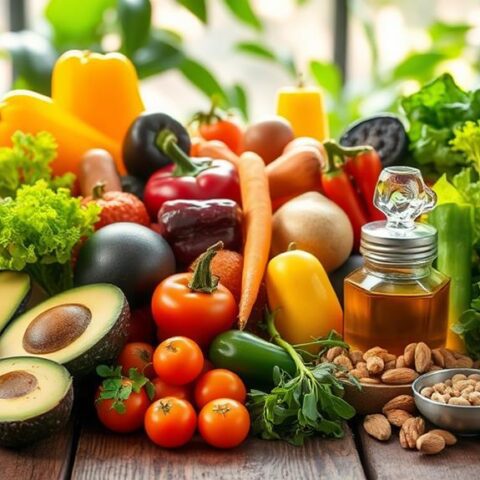
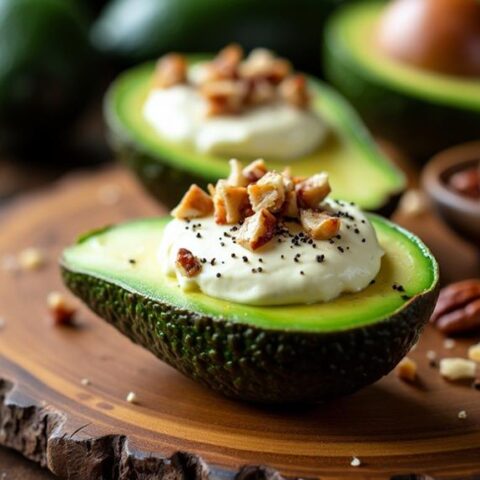
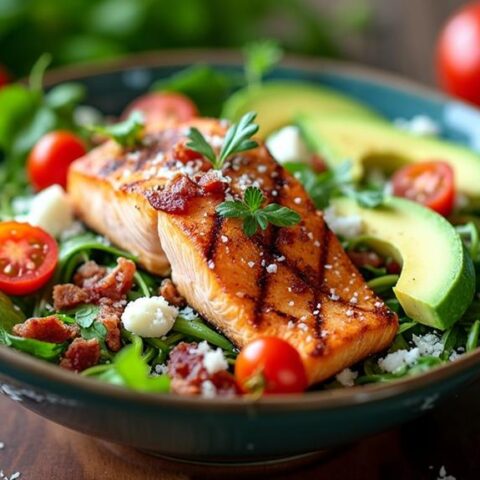
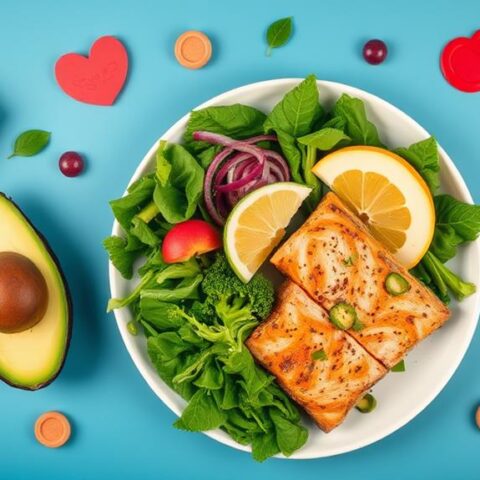
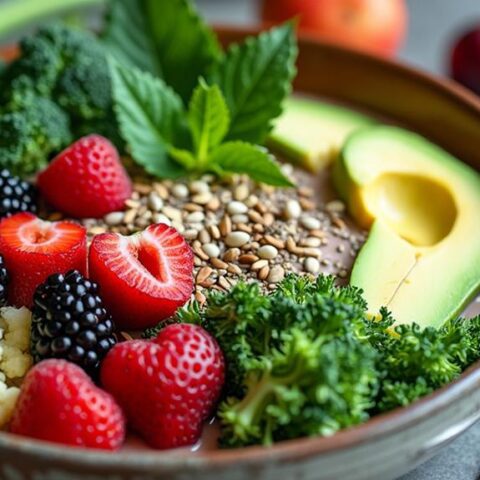

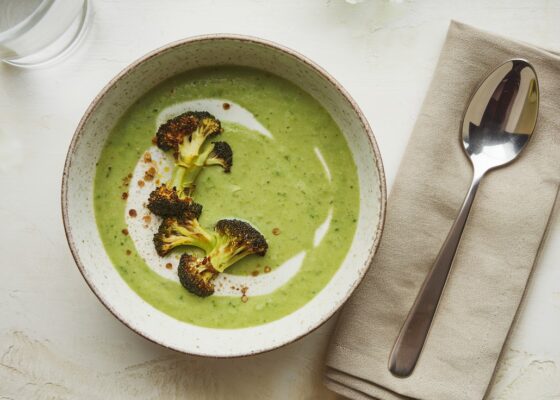

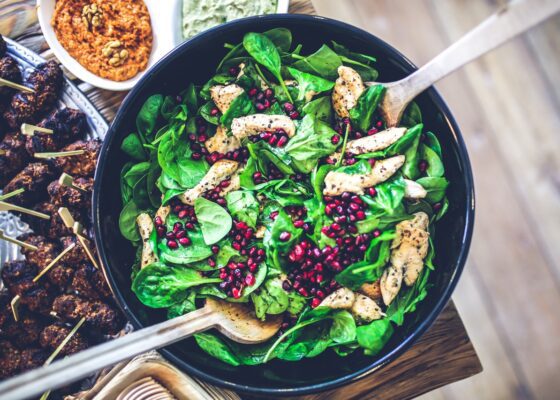
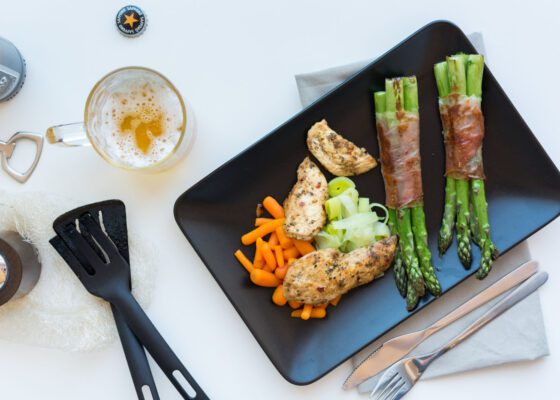
No Comments